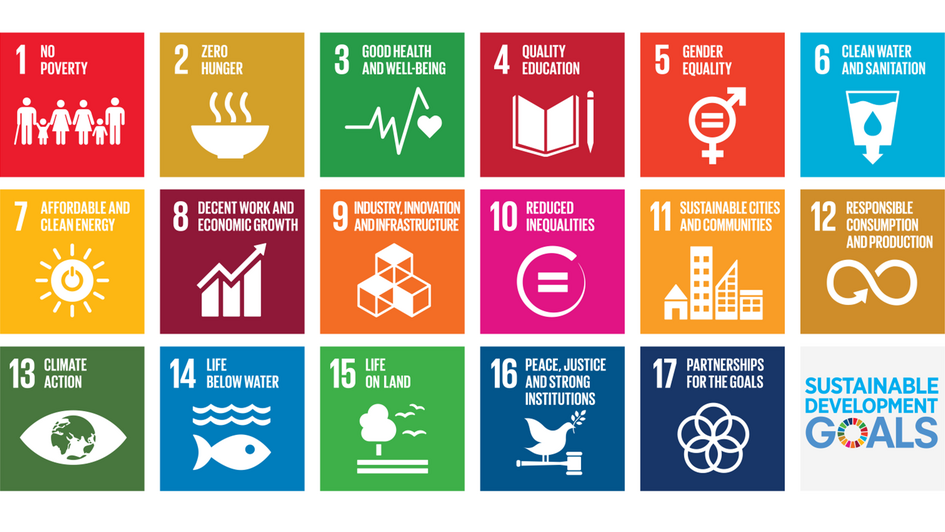
In the pursuit of a more sustainable and equitable world, innovative technologies have emerged as vital tools. Among these, anaerobic digestion and renewable natural gas (RNG) production have risen to prominence, offering promising solutions to address the Sustainable Development Goals (SDGs) set forth by the United Nations. In this article, we explore how anaerobic digestion and RNG production align with the SDGs and provide insights into the remarkable statistical projections that underscore their effectiveness in addressing these goals.
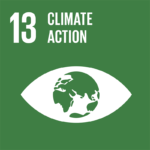
One of the most critical SDGs is the reduction of greenhouse gas emissions, primarily responsible for global climate change. Anaerobic digestion and RNG production play a crucial role in this regard.
1.1 Anaerobic Digestion
Anaerobic digestion is a natural biological process that decomposes organic materials in an oxygen-free environment, resulting in the production of methane gas. This methane can be captured and utilized as a sustainable energy source, mitigating its release into the atmosphere where it contributes to global warming.
Statistical projections emphasize the potential of anaerobic digestion in reducing greenhouse gas emissions. In the United States, the Environmental Protection Agency (EPA) estimates that anaerobic digestion systems could prevent over 35 million metric tons of carbon dioxide equivalent (CO2e) emissions by 2030. This aligns with SDG 13’s aim to combat climate change and its impacts.
1.2 Renewable Natural Gas (RNG) Production
Renewable natural gas, often derived from upgrading biogas produced through anaerobic digestion, offers a cleaner and renewable alternative to conventional natural gas. RNG significantly reduces greenhouse gas emissions when produced from renewable feedstocks, such as agricultural waste, landfills, or wastewater treatment facilities.
Statistical projections underline RNG’s potential in achieving SDG 13. The Renewable Natural Gas Coalition reports that RNG can reduce greenhouse gas emissions by over 90% compared to conventional natural gas. By 2030, RNG production has the potential to offset a significant portion of carbon emissions in the energy and transportation sectors, contributing to global climate goals.
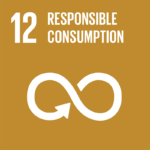
The circular economy model, aimed at minimizing waste and maximizing resource efficiency, is at the core of SDG 12. Anaerobic digestion and RNG production exemplify this approach.
2.1 Anaerobic Digestion
Anaerobic digestion closes the loop in the circular economy by converting organic waste materials into valuable resources. In addition to biogas, it produces nutrient-rich digestate that serves as an organic fertilizer in agriculture. This reduces the need for synthetic fertilizers and aligns with SDG 12’s call for responsible consumption and production.
Statistical projections highlight the potential impact of anaerobic digestion on the circular economy. In Europe, the European Biogas Association predicts that anaerobic digestion can divert up to 40% of organic waste from landfills while providing biogas and valuable biofertilizers. This shift minimizes waste and supports sustainable consumption and production, central to SDG 12.
2.2 Renewable Natural Gas (RNG) Production
RNG production advances circular economy principles by transforming waste gases into a valuable energy source. Landfills, wastewater treatment facilities, and agricultural operations can harness and convert waste gases into RNG, effectively repurposing waste and reducing its environmental impact.
Statistical projections illustrate RNG’s role in the circular economy. In the United States, the American Gas Association estimates that RNG production could displace up to 3.6 billion gallons of diesel fuel and gasoline by 2030 in the transportation sector alone. This contributes to resource efficiency, waste reduction, and responsible consumption and production in alignment with SDG 12.
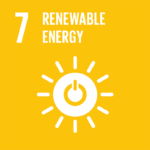
SDG 7 focuses on ensuring access to affordable, reliable, sustainable, and modern energy for all. Both anaerobic digestion and RNG production contribute to this goal by enhancing energy independence.
3.1 Anaerobic Digestion
Anaerobic digestion can be deployed at the local level, making it a valuable tool for enhancing energy independence. By utilizing local organic waste, communities can generate biogas for heat, electricity, or RNG production, reducing the need to import energy resources and enhancing local energy security.
Statistical projections highlight the potential of anaerobic digestion in enhancing energy independence. In Germany, for example, the Federal Ministry for Economic Affairs and Energy predicts that by 2030, anaerobic digestion could supply up to 13% of the country’s electricity needs, reducing dependence on external energy sources.
3.2 Renewable Natural Gas (RNG) Production
RNG production further advances energy independence by providing a versatile and renewable alternative to conventional natural gas. Rather than relying on imports of fossil natural gas, nations can harness RNG from local waste sources, diminishing their dependence on foreign energy suppliers.
Statistical projections emphasize the potential of RNG production in achieving energy independence. In the United States, the Advanced Research Projects Agency-Energy (ARPA-E) estimates that RNG could replace 10% of the country’s natural gas consumption by 2030. By sourcing natural gas locally from waste streams, nations can enhance energy independence and reduce vulnerability to global energy supply disruptions, in line with SDG 7.
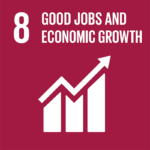
Sustainable development includes fostering economic growth and creating employment opportunities. Both anaerobic digestion and RNG production contribute to local economies and job creation.
4.1 Anaerobic Digestion
Anaerobic digestion facilities require skilled and semi-skilled workers for their operation and maintenance. These facilities are often located in rural areas, providing jobs in regions that may face economic challenges. Moreover, the use of digestate as a biofertilizer can boost agricultural productivity, creating additional employment opportunities in the farming sector.
Statistical projections demonstrate the job creation potential of anaerobic digestion. The World Biogas Association estimates that the biogas industry could create up to 3.5 million jobs worldwide by 2030, particularly in agriculture and the renewable energy sector. This dual benefit of sustainability and economic growth aligns with SDG 8’s objective of promoting sustained, inclusive, and sustainable economic growth, full and productive employment, and decent work for all.
4.2 Renewable Natural Gas (RNG) Production
RNG production facilities also require a workforce for their operation and maintenance, spanning from RNG production to vehicle conversion and maintenance, given the diverse applications of RNG. This multi-sector impact leads to job creation and economic growth.
Statistical projections illustrate RNG’s potential in bolstering economic growth and employment. The Natural Gas Vehicle Institute estimates that the RNG industry in the United States could support over 40,000 jobs by 2030. This highlights how RNG contributes to not only sustainability goals but also economic development, in alignment with SDG 8.
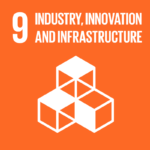
Sustainable development thrives on innovation and research to advance technologies and solutions. Both anaerobic digestion and RNG production provide fertile ground for technological advancements and novel solutions.
Anaerobic digestion can be further refined to improve efficiency and expand the range of organic materials it can process. Researchers are exploring ways to optimize the methane capture process and develop cost-effective solutions for smaller-scale applications.
Renewable Natural Gas production is also a hotbed for innovation, with ongoing research focused on improving biogas purification and upgrading techniques, exploring new feedstock sources, and advancing RNG vehicle technology and infrastructure. These initiatives highlight the potential for these technologies to not only address immediate sustainability goals but also pave the way for a more innovative and sustainable future, in alignment with SDG 9’s objective to build resilient infrastructure, promote inclusive and sustainable industrialization, and foster innovation.
Anaerobic digestion and renewable natural gas production stand as remarkable technological solutions that offer a clear pathway to achieving several Sustainable Development Goals. By reducing greenhouse gas emissions, advancing circular economy principles, enhancing energy independence, creating jobs, and fostering innovation, these technologies are integral to the global effort to create a more sustainable and equitable world.
As the world collectively strives to meet the SDGs and address the pressing challenges of our time, the adoption and expansion of anaerobic digestion and RNG production are more important than ever. Their remarkable statistical projections demonstrate their effectiveness in not only addressing the current global challenges but also in unlocking new opportunities for sustainable growth, employment, and technological innovation. By embracing these technologies, we take a significant step toward a brighter and more sustainable future, where the SDGs can become a reality, improving the lives of people worldwide and safeguarding the planet for generations to come.
We will be in touch within the next business day
We will be in touch within the next business day
We will be in touch within the next business day
We will be in touch within the next business day
We will be in touch within the next business day
We will be in touch within the next business day